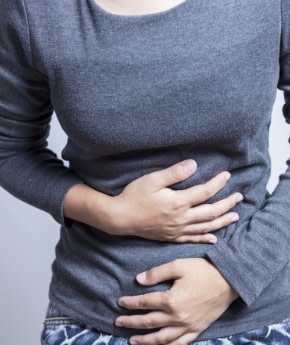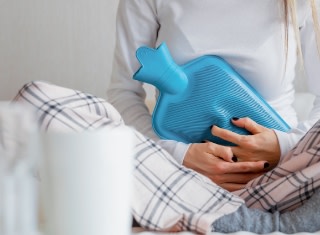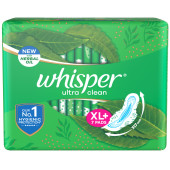All About Bad Period Pain

We are aware of the period pain that is quite common amongst most menstruating women. Monthly cramps in the stomach and backaches, tag along with your periods. A combination of home remedies and over-the-counter medicines are usually helpful, however there are some who experience extremely painful periods that keep them from going about their normal activities in the day. This excruciating pain that accompanies periods is known as dysmenorrhea. While there are reasons for bad period pains, you must ensure you see a doctor to get treated for the same.
Causes for Dysmenorrhea

The main reason for menstrual pain is the contraction of the uterus to expel the built-up lining. The hormone prostaglandin prompts muscle contractions in the uterus during which it may press against the blood vessels around it. This is in turn leads to cutting off the oxygen supply to muscle tissue. The pain triggers when for a brief time the muscle loses oxygen. The level of prostaglandin rises right before periods. This being the underlying cause of period pain, it is not that easy to identify the causes for unbearable menstrual pain. Some people are simply at a higher risk of painful periods. Some indications include -
- Reaching puberty before age 11
- Being 20 and having just started menstruating
- A family history of painful periods
- Heavy bleeding during periods
- Smoking
- Irregular periods
- Never having conceived
Painful menstrual periods or dysmenorrhea can also be attributed to underlying medical conditions such as -
Premenstrual Syndrome (PMS)
A common condition, PMS is the result of hormonal changes that take place in the body, one to two weeks before menstruation starts. Symptoms usually fade away once you get your period. PMS symptoms in some people can be very severe contributing to dysmenorrhea.
Fibroids in the Uterus
Noncancerous tumors, known as fibroids, may put pressure on the uterus or be a cause for period cramps and abnormal menstruation. These are difficult to catch as there are no precise symptoms. Uterine fibroids can become nightmarish during the monthly menstruation by increasing the amount of bleeding and the severity of period pains.
Endometriosis
Endometriosis is a medical condition wherein cells from the uterine lining grow on the fallopian tubes, ovaries, or on the tissue lining the pelvis. The cause for the period cramps is the uterus contractions that happen to remove large blood clots that result from heavy bleeding during periods.
Adenomyosis
A rare condition in which the lining of the uterus grows into the muscular wall of the uterus resulting in inflammation and severe pain. This may also cause longer and heavy periods.
Types of Dysmenorrhea

Primary and secondary are two types of dysmenorrhea, with the primary type found in people who experience pain prior to the periods and during menstruation. It is in fact the name for typical period cramps that are not caused by any diseases, but merely due to the uterine contractions. The pain lasting for one or two days ranges from mild to severe menstrual cramps in the back, lower stomach or thighs.
Secondary dysmenorrhea, on the other hand includes all the causes for painful periods that happen due to a disorder or an infection in the female reproductive organs. Pain from secondary dysmenorrhea generally begins sooner in the menstrual cycle and lasts longer than common period cramps. This is usually not accompanied by vomiting, nausea, fatigue or diarrhea. Normal periods that become painful later in life may fall under the secondary dysmenorrhea type. Endometriosis or uterine fibroids that affect the uterus and other pelvic organs, may be a cause for this type.
Remedies to Reduce Bad Period Cramps

While period pains are a common fact, there are ways to alleviate the pain. Dysmenorrhea although does require physician assistance, a few home remedies can help with period pain relief.
Yoga - Emotional stress is said to contribute to period pain. Relaxation techniques or exercises like yoga and meditation can reduce the severity of menstrual cramps by lifting your mood and refreshing your mind.
Workout – This may sound contradictory and with bad period pains, this is the last thing you’d want to do. However physical activity such as mild stretches, a short walk can ease the pain of menstrual cramps.
Heat - A heating pad or a warm water bottle held against your abdomen during your period is one way of offering great period pain relief. A hot water bath too may help reduce period cramps.
Avoid Alcohol - Smoking and alcohol have been found to worsen menstrual cramps, leading to dysmenorrhea, hence it is the best to avoid these especially while you are menstruating.
Staying Hydrated – It is important you drink plenty of fluids in order to reduce bloating and period cramps.
When should you see a Doctor?

Dysmenorrhea keeps some women from going to school, working or even doing everyday activities. There is however no need to suffer and put a hold on things in life for those few days every month. If none of the home treatments help alleviate the pain, and there is no improvement in your menstrual cramps, you must visit your doctor at the earliest to evaluate your symptoms.







